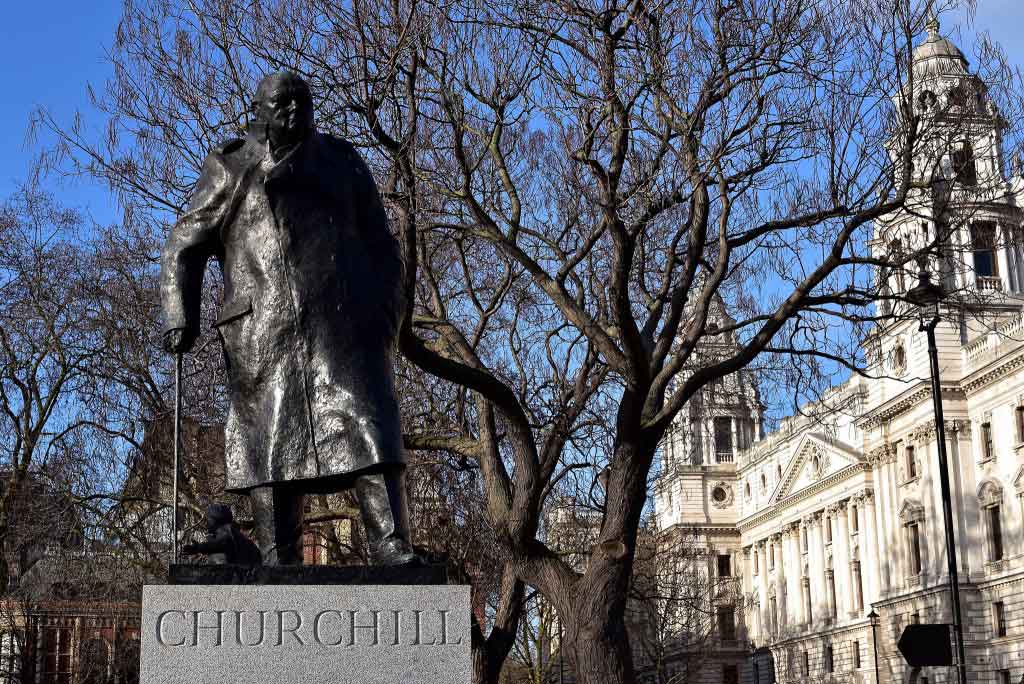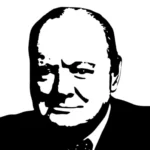Finest Hour 125
The Churchill Book of the Year

Winston Churchill, Parliament Square, London © Sue Lowry & Magellan PR
August 13, 2013
Finest Hour 125, Winter 2004-05
Page 41
The Churchill Book of the Year
Sir Winston Churchill: His Life Through His Paintings by David Coombs with Minnie Churchill. Foreword by Mary Soames. Philadelphia: Running Press, 256 pages, $40. Member price $32.

2025 International Churchill Conference
The background to this book was provided by Mim Harrison in Finest Hour 122: a revision of David Coombs’s original Churchill: His Paintings (1967). The successor to that long-out-of-print work is a beautifully printed and bound coffee table opus cataloguing 534 of Churchill’s paintings, including a dozen that were discovered in the 1990s. Together, they represent nearly the entire body of Churchill’s art, which Minnie Churchill spent six years tracking in collections around the world.
The 1967 book was the “bible” concerning Sir Winston’s paintings, but as David Coombs admits, “it was full of imperfections. We didn’t know when some were painted or what place they showed.” This new book isn’t perfect, but it’s very close, thanks to the meticulous work of the authors and the outstanding printing by the publishers. That brassy quality so common to cheaper all-color tomes is entirely missing. The photos, large and small, are all reproduced in brilliant color, correctly representing the originals. The text, which includes the original of Churchill’s essay “Painting as a Pastime,” tells what WSC was doing politically, and what he was painting, at each stage of his life. There are wonderful chapters on how Coombs validates a Churchill, on new discoveries, and on works still in question. “Unless it can be reasonably proved that the painting came from Winston or Clementine,” Coombs says, “it’s probably not authentic— even if it has his initials on it.”
The only fault is a certain organizational confusion which slows the rapidity of research. For example, I tried to look up the two 1946 paintings from the Surf Club at Miami Beach, which were allegedly sold recently at modest prices (see “Datelines.”) This wasn’t easy because the “Coombs numbers” (transferred intact from the 1967 work) are not in chronological order, and “Miami” and “Surf Club” are not listed in the all-too-brief index. Finest Hour 116 had published another painting done in Florida at that time (Mme. Balsan’s swimming pool). So we drew out FH, looked up Coombs 126, found it in the book’s index as figure 390, turned to page 191 and found the Miami paintings on the same spread. David Coombs was disappointed in the catalogue’s tiny type. The latter runs to seven pages, but should have been twelve pages in a larger type size.
Part of the usage difficulty is owed to Coombs’ determination to preserve his 1967 numbers, which were generally chronological, despite the discovery of many new works that fall in between, which received new (high) numbers at the end of the list. There are arguments pro and con about this. Coombs numbers are long established in the field, yet this is not a Scott or Gibbon stamp catalogue. In the main chapters, paintings are arrayed in roughly chronological order, so we perhaps should have found what we wanted merely by turning to the pages covering the 1940s.
Such a very small quibble does not change the fact that this is the Churchill book of the year: the finest and most authoritative source we will ever need on Churchill’s paintings. Don’t miss it.
Subscribe
WANT MORE?
Get the Churchill Bulletin delivered to your inbox once a month.



